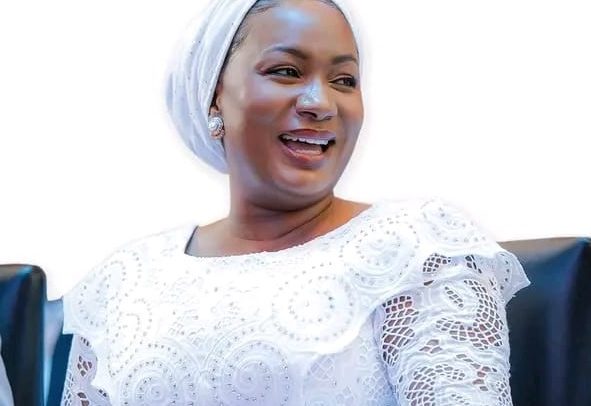
- bets on disinflation and strong GDP
- lowers MPR to 21.5%
By Joshua AMLANU & Ebenezer NJOKU
The Bank of Ghana (BoG) has lowered its monetary policy rate by 350 basis points (bps) to 21.5 percent, the lowest level since 2019, as it signalled confidence that inflationary pressures will continue to ease while economic growth remains robust.
The decision, announced at the conclusion of the Monetary Policy Committee’s (MPC) September meeting, reinforced the central bank’s determination to sustain the disinflation process that has brought headline inflation to its lowest level in four years.
The rate cut extends an easing cycle, which includes a 300bps reduction in July, that has already reduced borrowing costs in the money market and helped banks pass on lower rates to businesses and households.
Official data shows that average lending rates had dropped to 24.15 percent in August, compared to 30.07 percent and 30.79 percent at the beginning of the year and the same time last year, respectively. Similarly, the Ghana Reference Rate also stood at 19.67 at the end of August, versus 29.72 and 29.31 percent during the comparable periods.
Headline inflation fell to 11.5 percent in August, from 12.1 percent in July, marking the eighth consecutive month of decline. Core inflation, which excludes volatile items such as energy and utilities, also continued to ease. Inflation expectations among consumers, businesses and banks have moderated, reinforcing the view that price stability is taking hold.
The bank projects that headline inflation will fall within its medium-term target band of 8 percent, plus or minus 2 percentage points, by the fourth quarter of 2025, although it cautioned that a possible upward adjustment in utility tariffs could present risks in the medium term.
Governor Dr. Johnson Asiama said: “Given the current state of macroeconomic conditions, the view of the committee was that inflation will continue to ease in the near term. In the outlook, headline inflation is expected to drop to within the medium-term target of 8 percent, plus or minus 2 percent, by the end of the fourth quarter.”
The central bank attributed the disinflation process to prudent monetary management, fiscal consolidation, the appreciation of the cedi, and improved food supplies. Money market rates have responded swiftly to the policy stance, with the yield on the 91-day Treasury bill falling to 10.3 percent at the end of August from 13.4 percent a month earlier. Commercial banks have also begun to adjust their lending rates, which declined to an average of 24.2 percent in August from 26.6 percent in July.
On the growth front, the economy continues to expand at a decent pace with data from the Ghana Statistical Service showing real GDP rising 6.3 percent in the second quarter of 2025, compared with 5.7 percent in the same period of 2024. Excluding oil, output grew by 7.8 percent. Services and agriculture led the expansion, with growth of 9.9 percent and 5.2 percent respectively.
High-frequency indicators support the picture of strong activity as the Composite Index of Economic Activity recorded an annual growth rate of 6.1 percent in July, up sharply from 1.9 percent a year earlier, driven by international trade, consumption and industrial production. Confidence surveys conducted in August reflected improving consumer and business sentiment, while the Purchasing Managers’ Index pointed to rising new orders and better operating conditions.
Fiscal performance has also strengthened. The budget deficit on a commitment basis stood at 1.1 percent of GDP by July, outperforming the target of 2.1 percent. The primary balance posted a surplus of 1.0 percent, double the 0.5 percent target, despite revenue shortfalls. Public debt declined sharply to 44.9 percent of GDP in July, down from 61.8 percent at the end of 2024.
The banking sector showed signs of modest resilience, with asset growth, profitability and efficiency improving in the first eight months of the year. The industry’s capital adequacy ratio (CAR) rose to 17.7 percent in August, from 10.2 percent a year earlier, while the non-performing loan ratio improved to 20.8 percent from 24.8 percent. The central bank, however, warned that credit risk remains elevated and called for strict adherence to recapitalisation plans and regulatory guidelines to further reduce vulnerabilities.
External balances have strengthened considerably, underpinned by a sharp rise in gold and copper export earnings. The trade surplus widened to US$ 6.2 billion in the first eight months of 2025, from US$ 2.1 billion in the same period last year. Gross international reserves stood at US$10.7 billion at end-August, equivalent to 4.5 months of import cover, albeit a drop from the US$11.1 billion (4.8 months cover) recorded in June.
The cedi’s performance against major partners, especially the US dollar, has been pendulum-like, appreciating by approximately 42 percent in July but falling to 21 percent by mid-September, as the central bank reined in market intervention.
To reinforce external stability, the MPC also announced a change in the net open position limit for banks’ foreign exchange exposure. The single currency limit, previously set at plus or minus 5 percent, has been revised to between 0 and minus 10 percent, effective from October 1. The adjustment is aimed at strengthening liquidity management and reducing speculative positions in the currency market.
The MPC will meet again from November 17 to 19, with the outcome of that session expected to set the tone for policy through the end of the year.
The post BoG extends easing cycle appeared first on The Business & Financial Times.
Read Full Story














Facebook
Twitter
Pinterest
Instagram
Google+
YouTube
LinkedIn
RSS